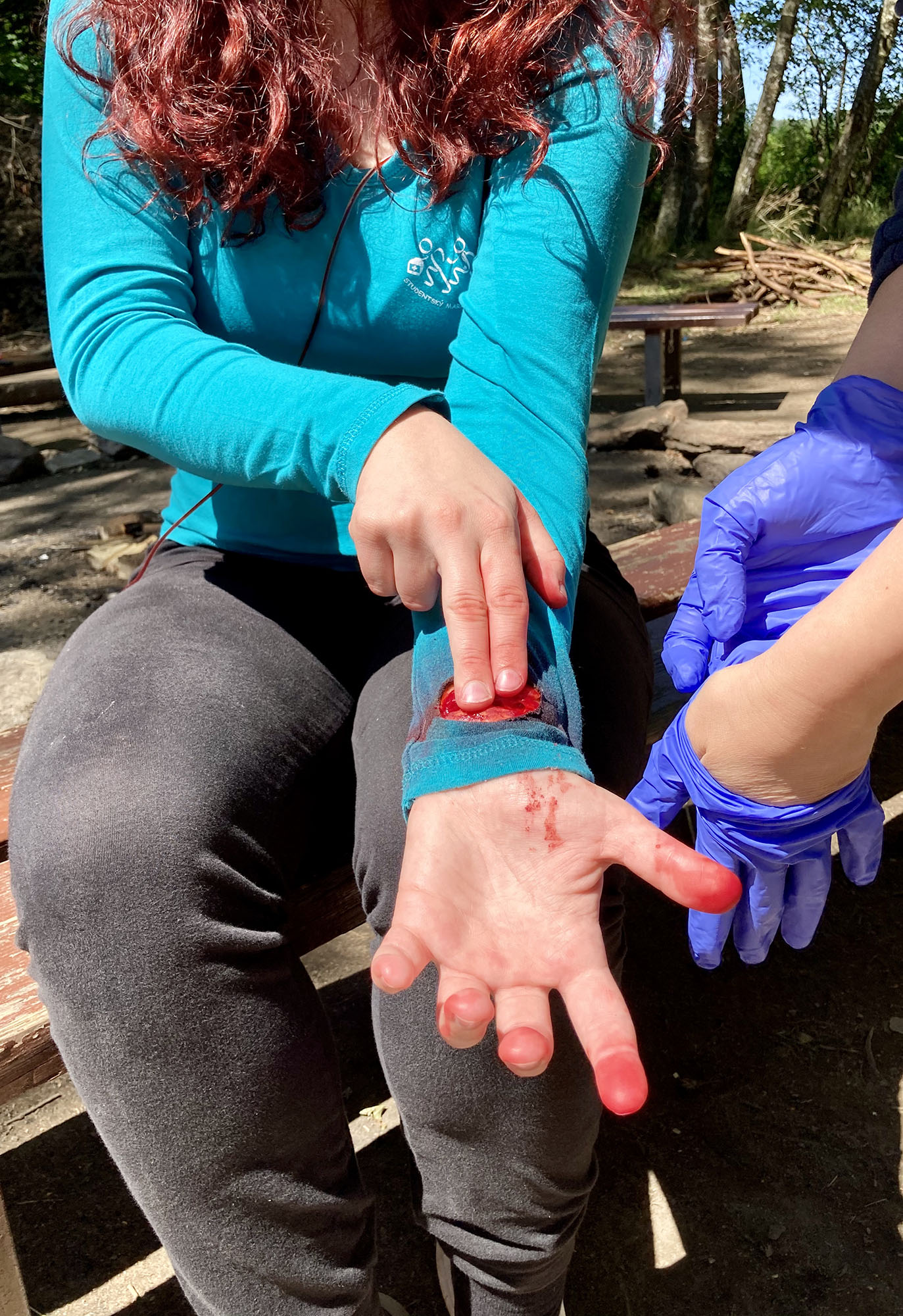Approach to the unresponsive patient
Safety
- ensuring the safety of the rescuer, the patient and the bystanders is the first and important step while providing first aid
- before proceeding to the next steps of the algorithm, you must always decide if the situation is safe or not for you as the rescuer
- what risks can we face?
-
Risks of transmitting infections
- to reduce the risk, we should use protective equipment while providing first aid (e.g. wear single-use gloves when handling biological material)

-
Risks related to threats in the area of the incident

- always think about what the origin of the patient's troubles is and make sure that the same thing does not endanger you as well
Which situations are dangerous for the rescuer?
| a car accident on a highway | |
| a freely walking pitbull | |
| an aggressive husband who has hit his wife | |
| a drug-addicted man suffering from withdrawal syndrome who tends to be aggressive | |
| a man captured in a flaming house |
- the danger can have many different forms
- before entering the area of the incident, inspect the surrounding environment properly and consider all the circumstances carefully (e.g. you have just found three unresponsive young people in the room - What could be the cause? Are you (as a rescuer) also at risk?)
- the most important task is to ensure your own safety
- there are no guidelines on how to decide whether the situation is safe or not
- some situations could endanger the rescuer's life, the decision about providing first aid is however always up to the rescuer
- if the situation becomes dangerous while you are providing first aid, stop all your actions and react promptly to the imminent threat
- be always able to find an escape route